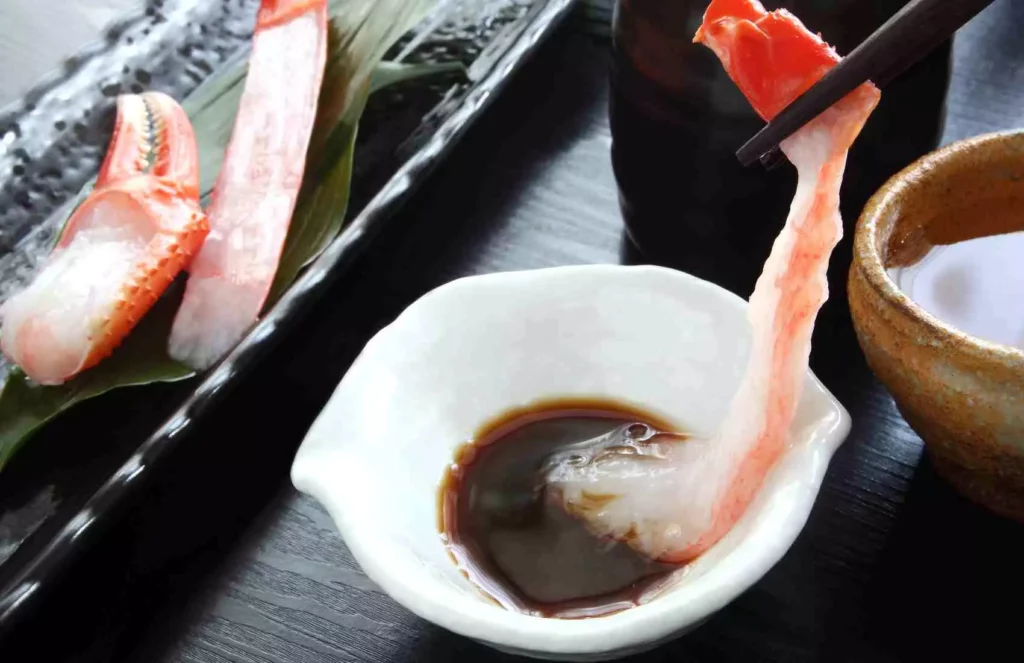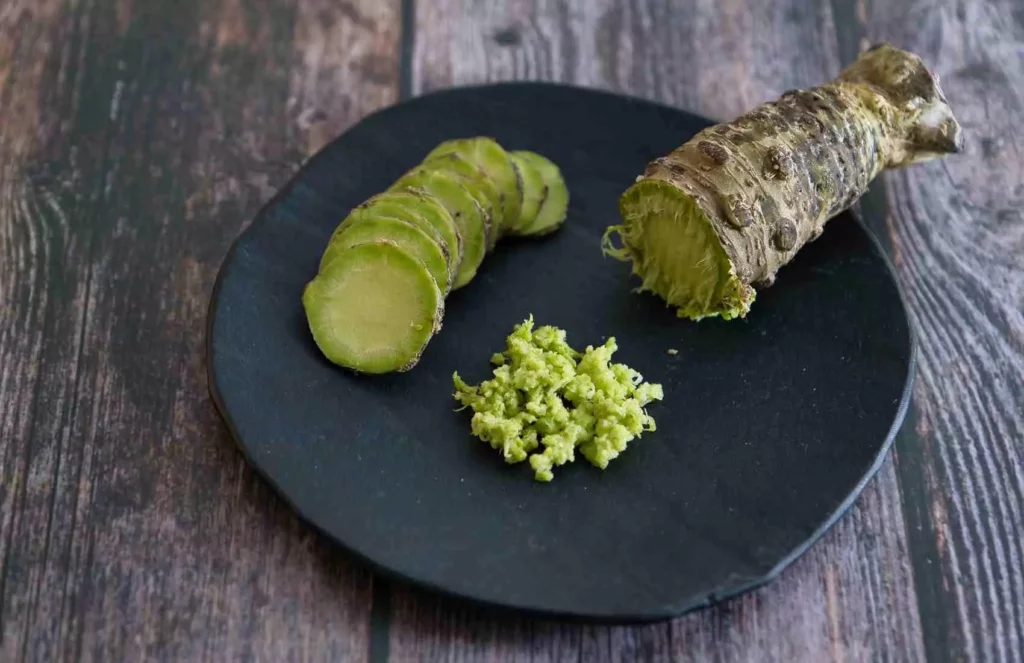Have you heard about kani sashimi, and want to know about it. Today’s blog post covers all about kani sashimi. So, keep reading, here we come!
What Does Kani Mean?
The term “kani” is the Japanese word for crab. In Japanese cuisine, kani refers to dishes or ingredients that involve crab meat.
“Kani” is a common term you may encounter in Japanese restaurants, particularly when ordering dishes like sushi, sashimi, or sushi rolls that include crab.
What is Kani Sashimi Aka. Crab Sashimi?

Kani Sashimi or crab sashimi is a Japanese delicacy featuring thinly sliced raw crab meat served with sauces.
Sashimi is a traditional Japanese culinary technique that involves serving raw fish or seafood without rice (unlike sushi, which includes rice). The word “sashimi” itself means “pierced body,” referring to the traditional method of presenting the fish with its garnishes.
In the case of crab sashimi, raw crab meat is sourced from fresh and high-quality crabs. The most common types of crab used for sashimi are snow crab and king crab due to their sweet and tender meat.
The crab is expertly sliced into thin pieces and often arranged in an appealing presentation on a plate. It is usually served with soy sauce or a special dipping sauce called “ponzu,” which is made from citrus juice, soy sauce, and other seasonings.
Kani sashimi is a luxurious delicacy on the menu and is enjoyed for its fresh, sweet flavor and delicate texture. You can watch the full process of crab sashimi making at a Japanese restaurant.
Is Kani Sashimi Made with Imitation Crab Meat?
Traditionally, at Japanese restaurants, kani sashimi is made by using high-quality fresh crab meat, which is sourced live. This sashimi is pretty expensive, costing you as much as $1000. Yet, at many restaurants, Kani sashimi is made with crab sticks.

Imitation crab meat, also known as surimi, is a processed seafood product made from various types of white fish, such as pollock. It’s combined with starch, sugar, egg white, and flavorings.
The resulting mixture is formed into crab-like sticks or flakes that resemble the texture and appearance of crab meat. The flavor of imitation crab meat is often sweet and mild, which makes it an inexpensive alternative to crab meat for sushi rolls, sashimi, and other Japanese dishes.
HOWEVER
In no way can you compare sashimi made with crab sticks with that of raw crabs.
WHY?
It’s because imitation crab meat is cooked, while sashimi is about serving raw meat with Japanese sauces. So, if it’s imitation crab sashimi, skip it… it’s not for you! You should search for real crab sashimi in your country or travel to Japan.
What Does Real Kani Sashimi Taste Like?
Crab sashimi has a unique and delicate flavor that can vary depending on the type of crab used and its freshness. Crab sashimi tastes generally sweet and mildly briny, with subtle seafood umami and fishy flavor. The texture is tender and slightly firm, which enhances the overall dining experience.

The specific taste of crab sashimi can also be influenced by how it is served and any accompanying sauces or seasonings. Traditional Japanese dipping sauces like soy sauce or ponzu (citrus-based sauce) complement the crab’s natural sweetness and add a touch of acidity and saltiness.
Wasabi, a spicy Japanese horseradish, is often served alongside crab sashimi, and when combined with soy sauce, it provides a fiery kick that balances the sweetness.
Since crab sashimi is typically made from fresh, high-quality crab, the flavor should be clean and pure, allowing the natural taste of the crab meat to shine through. It is a delicacy enjoyed by many seafood enthusiasts for its freshness, sweetness, and delicate umami notes, making it a popular choice in Japanese cuisine.
Is it Safe to Eat Crab Sashimi?
Consuming crab sashimi, like any raw seafood, comes with inherent risks, but it can be safe if certain precautions are taken. Here are some factors to consider:
- Ensure that the crab used for sashimi is fresh and sourced from reputable suppliers.
- Proper storage and handling of raw crab are crucial to prevent contamination. Restaurants and suppliers should follow strict food safety practices to minimize the risk of foodborne illnesses.
- Individuals with compromised immune systems, pregnant women, and young children should be cautious when consuming raw seafood, as they are more susceptible to foodborne illnesses.
- If you have allergies to crab or seafood, avoid eating crab sashimi altogether.
- Crabs, especially certain types like king crab, can contain trace amounts of mercury. So, moderation is key, as excessive mercury consumption can be harmful.
- Follow any guidelines or advisories issued by health authorities regarding consuming raw seafood in your region.
Though sashimi-related foodborne illnesses risks are minimal, eating crab sashimi at reputable restaurants known for their food safety practices is essential. If you have any health concerns or doubts, consult a healthcare professional before consuming raw seafood.
So, Should you Try Eating Kani Sashimi?
Indeed, the Japanese delicacy, kani sashimi, is worth eating. Yet, before trying to eat sashimi, choose a reputable restaurant or supplier that sources fresh and high-quality ingredients to minimize potential risks. Also, make sure that you’re not allergic to seafood.







